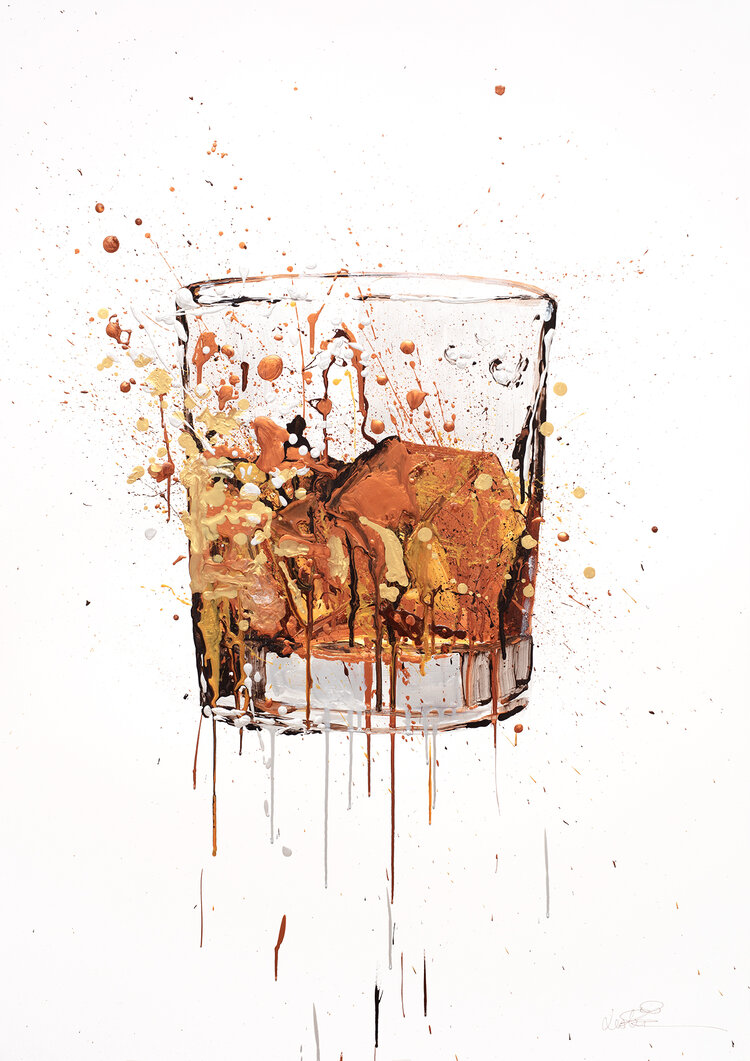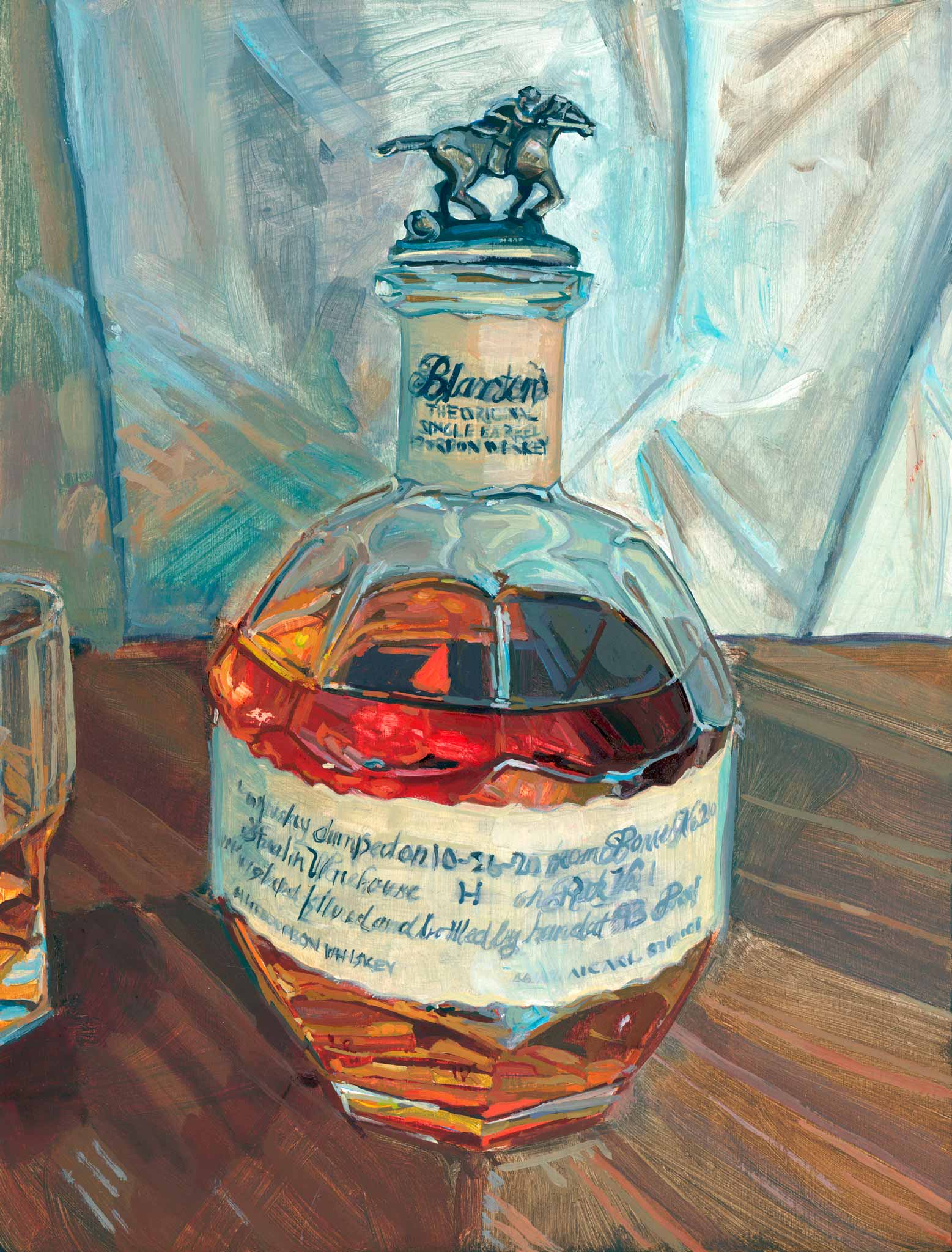Capturing the Essence of Bourbon Art With One-of-a-kind Aesthetic Representations and Styles
The art of bourbon expands past the fluid itself, showing up with a range of aesthetic depictions that envelop its fabled heritage and workmanship. What remains to be revealed is how these developing designs mirror not only the scotch itself however also the altering landscape of imaginative analysis. Realism Art.
The Background of Whiskey Art

As bourbon manufacturing spread, so as well did the wish to boost its experience via art. From the detailed inscriptions on early barrels to the fancy tags of contemporary bottles, each element reflects an unique artistic vision, functioning as an aesthetic narrative of the whiskey's heritage.
In the 19th and 18th centuries, the surge of the commercial change even more enhanced scotch art, resulting in cutting-edge product packaging and advertising that caught customer interest. Musicians and designers began experimenting with aesthetics, imbuing whiskey-related imagery with symbolic definitions that shared concepts of custom, craftsmanship, and area.
Today, scotch art continues to develop, blending typical methods with contemporary art kinds. Bourbon Art. This recurring dialogue in between the spirit and its graph underscores the enduring bond between whiskey and culture, enriching the overall experience for enthusiasts worldwide
Iconic Bottle Styles
While many aspects add to the attraction of bourbon, iconic bottle styles play a crucial role fit customer perception and boosting the total experience. The visual presentation of bourbon containers is not merely an aesthetic factor to consider; it works as a bridge in between the product and the customer, evoking emotions and setting expectations.
Distinct shapes, materials, and closures can elevate a scotch brand name's identity, making it quickly recognizable on crowded shelves. The timeless Glenfiddich bottle, with its elegant conical shape, shares a sense of custom and craftsmanship, while the strong, modern-day style of the Balvenie bottle reflects advancement and refinement. The use of colored glass or unique appearances can recommend the top quality and personality of the scotch within.
Famous layouts usually integrate elements of social heritage, signifying the brand name's background and connection to its origins. Brand Names like Jack Daniel's make use of an uncomplicated, durable layout that resonates with its American whiskey heritage. Inevitably, the effect of container style expands beyond simple functionality; it envelops the essence of the brand, inviting consumers to discover and indulge in the abundant tapestry of whiskey society.
Label Art Work and Branding
Bottle styles often set the stage of what customers can anticipate, but label art work and branding play a just as significant role in communicating a whiskey's identification. The label works as the initial factor of get in touch with between the customer and the product, encapsulating the essence of the scotch within Full Article its visual aspects.
Effective important source label artwork integrates images, typography, and color to create a story that resonates with the brand name's heritage and target market. A tag including complex illustrations and vintage font styles might evoke a feeling of custom and craftsmanship, appealing to aficionados. In contrast, bold shades and modern-day layout elements might attract a younger demographic seeking innovation and exhilaration.


Digital Photography and Visual Storytelling
Recording the significance of bourbon through digital photography and visual narration is an art form that boosts the brand name experience. This medium transcends mere item representation, delving into the intricate stories that border each container. By using engaging images, digital photographers can evoke emotions that resonate with customers, ultimately creating a much deeper link to the bourbon brand name.
Visual narration in bourbon digital photography usually makes use of abundant appearances, lights, and structure to highlight the distinct features of the spirit. The interplay of light and shadow can accentuate the brownish-yellow shades of bourbon, while the selection of history elements-- such as rustic barrels or elegant glasses-- can reinforce the brand's heritage or way of living associations.
Moreover, capturing the ritualistic facets of scotch intake, from the pouring to the sampling, invites visitors right into a sensory experience, permitting them to think of the flavors and scents that await. Each picture not only showcases the item best site but also narrates of workmanship, tradition, and the minutes that scotch can boost - Bourbon Art. Therefore, digital photography comes to be an effective tool in expressing the identity of whiskey brand names, placing them within the more comprehensive social landscape
Emerging Trends in Bourbon Art
The evolution of bourbon art is increasingly formed by contemporary patterns that mirror wider societal changes and consumer choices. One noticeable pattern is the combination of sustainability right into art techniques. Musicians are currently using eco-friendly processes and recycled products to create whiskey-themed pieces, reverberating with eco conscious consumers. This change not only highlights the importance of sustainability but also improves the narrative surrounding bourbon production.
Furthermore, digital art has actually surged in appeal, permitting innovative representations of whiskey. Artists are leveraging technology to craft immersive experiences, such as enhanced reality installations that involve viewers and give a much deeper understanding of whiskey's cultural significance. This trend additionally includes social networks systems, where aesthetically striking web content gathers attention and fosters neighborhood among enthusiasts.
Furthermore, collaborations between scotch brands and artists are becoming more typical. These partnerships generate limited-edition product packaging designs and special artworks that commemorate both the workmanship of bourbon and the creativity of artists. As bourbon art remains to progress, these arising fads will most certainly form its future, fostering a vibrant crossway of culture, sustainability, and innovation within the whiskey neighborhood.
Final Thought
Finally, the art of scotch incorporates a diverse array of graphes that show its abundant heritage and craftsmanship. From iconic container designs and complex label artwork to compelling digital photography, each component adds to a wider story that improves the consumer's experience. As arising fads, such as digital art and sustainability, continue to shape this creative landscape, the multifaceted identity of scotch remains an enduring source of social connection and exploration.

In final thought, the art of bourbon incorporates a diverse range of aesthetic representations that reflect its abundant heritage and craftsmanship.
Comments on “Bourbon Art in Contemporary Society: Where Practice Fulfills Innovation”